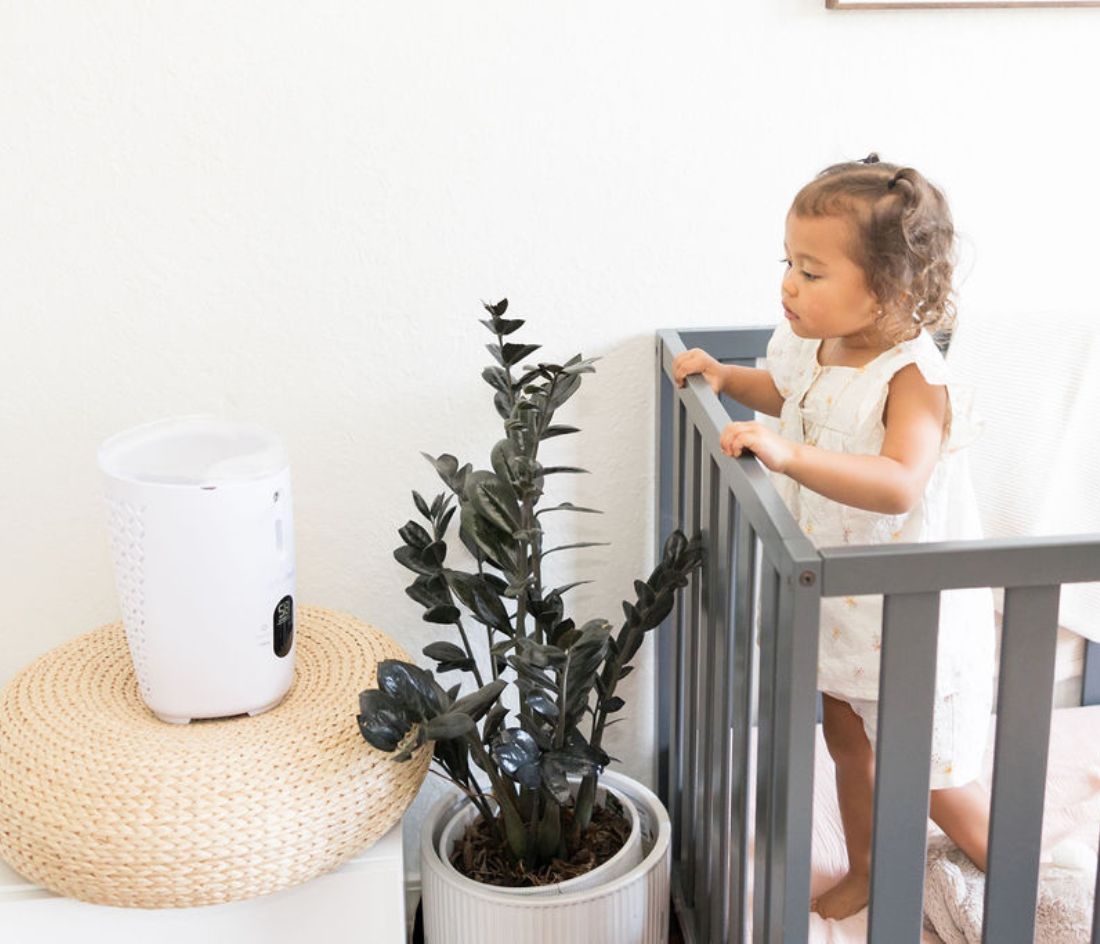Guest Post by Katy Fleming, MA, LPC, BSN, RN
When babies are born premature or earlier than their due date, they are at risk for respiratory issues such as pneumonia or respiratory distress syndrome (RDS).
Under-developed lungs lead to difficulty breathing and the need for medical treatment. Learn the signs and symptoms to recognize respiratory distress in your preemie.
Preemies and Respiratory Issues
As a parent, you never want to hear your little one struggle to breathe.
You may feel overwhelmed or lost when your baby arrives earlier than expected with medical problems. Many parents aren’t quite sure what to anticipate when respiratory distress is diagnosed.

Building an understanding of the typical causes, symptoms, and treatments of respiratory distress and other respiratory issues will better prepare you for the next steps in your parenthood journey.
What is Respiratory Distress Syndrome?
The most common respiratory problem for preemies is respiratory distress syndrome (RDS), which requires assistance with breathing and oxygen.
Other respiratory problems include pneumonia, meconium aspiration, and chronic lung disease.
Babies born earlier than 28 weeks of pregnancy are at very high risk for respiratory distress syndrome. The more premature the infant is, the higher the risk.
Your kiddo’s lungs begin to develop by 3-6 weeks in the womb, however, important aspects of the lungs are still developing in the third trimester.
When a baby arrives early, their lungs and immune system are not working at full capacity.
What Causes RDS in Preemies?
Respiratory Distress Syndrome is caused by a lack of surfactant in the lungs. Surfactant is a foamy liquid that allows the lungs to fully expand.
This substance is essential for your little one to breathe air. Without it, the lungs may collapse once born and the baby must work much harder to breathe.
During the final weeks in the womb, your baby is continuing to grow and develop, especially the intricacies of their lungs. By the 24th week of gestation, your baby’s lungs begin to develop surfactant and continue up until birth.
Preemies often don’t have enough time to produce enough surfactant, which is vital to breathing once outside their cozy womb.
Those more at risk of developing respiratory distress syndrome are infants of mothers with diabetes, twins or multiple babies, those born of a c-section, and a sibling having RDS.
Babies born full-term can develop RDS, as well, although it occurs most often in preemies. In some cases, RDS is caused by a genetic condition with lung development.

What are the Symptoms of RDS?
Signs of respiratory distress typically appear quickly after birth. Here are the most common signs and symptoms:
- Grunting with each breath
- Fast and shallow breathing
- Flaring of the nostrils with each breath
- Bluish color in the baby’s lips and skin
- Chest retractions (muscles over the ribs pull in when breathing)
Diagnosis and Treatment of RDS
Your doctor will need to rule out different respiratory issues before diagnosing RDS.
First, a physical exam will identify the signs and symptoms reviewed above. Then, the physician will typically complete a chest x-ray or other form of imaging to assess the functioning of the lungs and heart.
They may complete blood tests to rule out infections or an echocardiogram (ultrasound of the heart) to assess for any congenital heart problems.
After receiving the diagnosis, treatment initially focuses on providing the infant with supplemental oxygen and monitoring breathing.
This may include a nasal cannula, which is a pronged tube placed in the nostrils to provide oxygen. Some may require a continuous positive airway pressure machine (CPAP), which pushes air into the baby's lungs.
In serious cases, a ventilator is utilized to breathe the baby as life support. If a child still requires breathing support by their original due date, then they are diagnosed with another condition called bronchopulmonary dysplasia.
Treatment depends on the baby’s gestational age and overall condition. Some babies are provided with artificial surfactant, which is most effective when given in the first 6 hours from birth.
What Can I Do to Prevent RDS?
Respiratory Distress Syndrome is not always preventable. However, it’s most common in preemies, so avoiding a premature birth will lower the risk.
It helps to eat a nutritional diet, avoid drugs and tobacco, avoid alcohol, and get good prenatal care.
Sometimes, doctors can give mothers corticosteroids between 24-34 weeks of gestation to lower the risk and severity of RDS in babies.
If you’re looking for further information, check out these:
- 5 Things to Know When Your Baby or Child is Prescribed Antibiotics
- Common Mistakes Parents Make When Trying to Calm a Crying Baby
- Causes of Baby Congestion (And When to Visit the Doctor)
- How to Maintain Your Newborn's Routine When Traveling for Spring Break
- 10 Things to Consider When Choosing a Daycare
Respiratory issues are scary, especially in young babies. Follow the prenatal care advice during your pregnancy from your medical team.

Establish a relationship with a doctor that you trust and ask questions to ensure that you’re on the same page.
If your preemie is born with respiratory distress syndrome, ask the physician about your baby’s condition, treatment, and outlook.
As a licensed counselor and registered nurse, Katy approaches freelance writing with years of experience and a unique perspective. Alongside her partner, Katy loves to travel the world and embrace other cultures from volcanoes in Iceland to villages in India.
The Nozebot is a battery-powered suction device designed to clear nasal congestion in babies and children.



